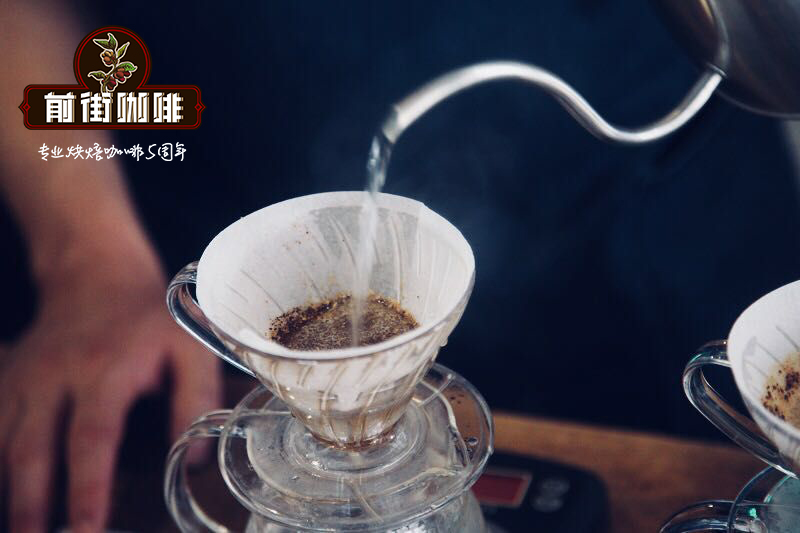What is the market prospect of Indian coffee? The output and planting area of coffee in India have increased.

Professional coffee knowledge exchange more coffee bean information please follow the coffee workshop (Wechat official account cafe_style)
The Indian coffee market:
Currently, the Coffee Council of India (IndianCoffeeBoard) controls the entire coffee industry, buying coffee and then selling it. Coffee is sold at mass auctions. These coffees are mixed together to reach a certain trade volume, which eliminates the differences between manors and regions, so that many high-quality coffee producers lack sufficient motivation to produce unique and high-quality coffee beans. The government tried to solve this problem in 1992, and through its efforts, the famous ValleyNuggets coffee was obtained through seeds from A-grade coffee plantations in several quality coffee producing areas.
Consumption is still slowing, but the outlook is promising.
Coffee consumption in India in 2017 / 18 is expected to be the same as last year's 1.2 million bags (72300 metric tons). According to industry sources, ready-to-drink / instant coffee manufacturers are changing the proportion of coffee to cater to the tastes and preferences of consumers across the country and to maintain commercial and financial competitiveness. Sources of trade further indicate that, despite the traditionally high proportion of roasted and ground coffee, the share of instant coffee has increased in recent years, particularly in northern India, and will continue to remain at a high level in 2017 / 18.
In the past decade, hundreds of Western-influenced coffee shops have emerged in India's major and "second-tier" cities. In these coffee shops, coffee is now competing with tea, which was once dominant, especially among young consumers. In addition to large coffee chains, artisanal coffee brands have also sprung up in big cities, but coffee sold in these cafes is expensive.
In recent years, more and more people are willing to consume food and drinks outdoors, which has contributed to the growth of coffee consumption with the increase of disposable income. Many companies are targeting young professionals; women in particular, but the pace of expansion seems to have slowed in recent years.

Increase in area of producing area, increase in coffee production
Total production is projected to be 5.6 million bags in 2017 / 18, 1.4 million bags in Arabica and 4.1 million bags in Robusta. Due to the rainfall brought by the early southwest monsoon, it blossomed well in March and April, which was beneficial to the growth of coffee. Due to good rainfall and irrigation water, Robusta crop production is expected to increase slightly compared with last year.
According to the Indian Meteorological Department, precipitation in traditional coffee-growing areas was higher than normal in the late southwest monsoon (September), while there was insufficient rainfall in the early northeast monsoon (October-December). Geo-spatial analysis shows that in 2017 / 18, the soil had enough water to support the growth of coffee.
The Indian Coffee Commission under the Indian Ministry of Commerce estimates that coffee production will increase by 12 per cent in 2017 / 18 compared with last year due to an increase in acreage of about 13500 hectares. It is predicted that in the three coffee growing areas of Karnataka, Robusta's production is expected to increase by 14 per cent (30300 metric tons) over the previous year, while Arabica will increase by 9 per cent (8100 metric tons). Similar increases have been seen in places like Tamil Nadu and Kerala.
The Coffee Council of India estimates that after flowering in 2017 / 18 (before the monsoon), production was 5.84 million bags (350400 metric tons). Industry sources report that India's overall crop will increase by 8-10%. According to a field survey conducted in May 2017, the Coffee Committee is likely to lower its estimate for 2017 / 18. Any significant losses caused by monsoon rains will be taken into account in the December 2017 forecast.
The Committee revised its final estimate for the 2016 / 17 harvest to 5.2 million bags (312000 metric tons-including 95000 metric tons of Arabica and 217000 metric tons of Robusta).
Important Notice :
前街咖啡 FrontStreet Coffee has moved to new addredd:
FrontStreet Coffee Address: 315,Donghua East Road,GuangZhou
Tel:020 38364473
- Prev

Forbes says Starbucks' wages are unfair. Netizens: pay by piece like a factory?
Professional coffee knowledge exchange more coffee bean information please follow the coffee workshop (Wechat official account cafe_style) according to the Glassdoor website, the salary of Starbucks baristas in the United States is 7 to 15 US dollars per hour, with an average hourly wage of 9 US dollars, which means Starbucks will give 150000 employees in the United States at least two pay increases. According to the Forbes article, this hourly wage is unfair to baristas.
- Next

Is Blue Mountain Coffee out of date? What is the topic of "outdated" Blue Mountain Coffee?
Professional coffee knowledge exchange more coffee bean information Please follow Coffee Workshop (Wechat official account cafe_style) just like taking a turn with the tide of boutique coffee that has swept the world in the past decade, cutting-edge varieties represented by Panama Rose Summer with its more powerful attitude make Blue Mountain Coffee seem to become yesterday's yellow flower. Now, it seems that the word Blue Mountain now
Related
- What is the difference between a cake filter cup and a V60 conical filter cup? What are the advantages and disadvantages of the flat-bottomed filter cup brewing solution?
- What is the difference between fine coffee powder and medium coarse coffee powder? Do I need to sift out the fine coffee powder for making coffee by hand?
- Why does hot American coffee taste bitter? Difference in proportional concentration between hot American and ice American
- Is espresso stored overnight in the refrigerator harmful to your body? Is frozen coffee better than freshly ground coffee?
- What parameters and proportions of water temperature should be used to grind and brew fresh coffee beans? Why can't I drink freshly roasted coffee right away?
- Customers have "changed" Manner's new products! Shop assistant: Please don't mess around!
- Remove sockets in customer areas at Starbucks stores?! Netizen: I won't go if I really tear it down
- What is the difference between the taste steps of sun-dried coffee and washed coffee? Why is sun-cured coffee sweeter and washed coffee sour?
- The recipe for salty grapefruit dirty is revealed! Coffee Festival salty grapefruit dirty coffee making materials parameters ratio milk share!
- How about the flavor of Sunlight 74158 at Sidamo Banshaha Mathieu Processing Factory in Ethiopia? 74158 Share the proportion of coffee brewing parameters!

